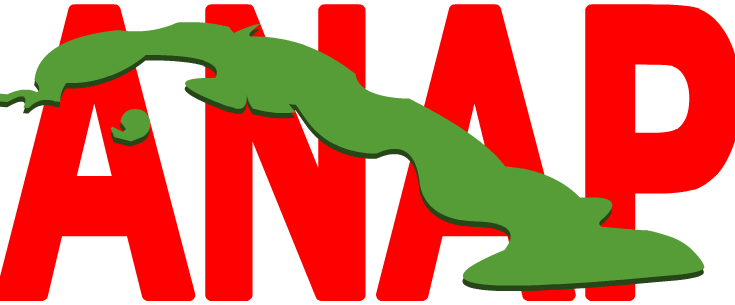Anapista is a member of the The National Association of Small Farmers (ANAP). Anapista comes from an extension of the acronim ANAP+ista
The National Association of Small Farmers (ANAP) was created on May 17, 1961, within the framework of its First Peasant Congress, under the protection of the revolutionary laws and its General Regulations define that by the express will and decision of the Cuban peasantry, it is the mass organization of cooperative members, farmers and their families, whose economic and social interests correspond to the harmonious development of the construction of Socialism; its projections are based on and oriented towards the fulfillment of the agrarian policy of the Cuban Revolution.
ANAP has 4,331 grassroots organizations with 331,874 members, of which 35,971, 11%, are women.
Of the grassroots organizations, 1,089 are Agricultural Production Cooperatives (CPA) (voluntary associations of peasants who unite their land and productive assets to form a socialist cooperative enterprise, with common patrimony and where work is organized collectively. The remuneration of its members is based on the work contributed) and 3,242 are Credit and Service Cooperatives (CCS) (associative organizations where the individual form of ownership of the land and other productive assets is maintained, the work is organized as a family economy. The cooperative management of the CCS facilitates technical, credit and service assistance to the population).
The CPAs have 62,494 members and the CCSs have 269,380, of which 159,545 are landowners and 109,835 are usufructuaries.
The following organizational and territorial structure is in place to direct the grassroots organizations in the cooperatives: a National Committee with an Executive Bureau elected from among its members, as well as an auxiliary apparatus of professional cadres. Fourteen Provincial Committees and 153 Municipal Committees with their respective Executive Bureaus.
The ANAP enables technical and economic assistance to small farmers in the production field and organizes the sustainable use of human and material resources. Participates in the formulation of policies and strategies relating to agriculture and production. Organizes large training programs for farmers and members of small cooperatives. Promotes and disseminates the experience of sustainable agriculture among farmers.

